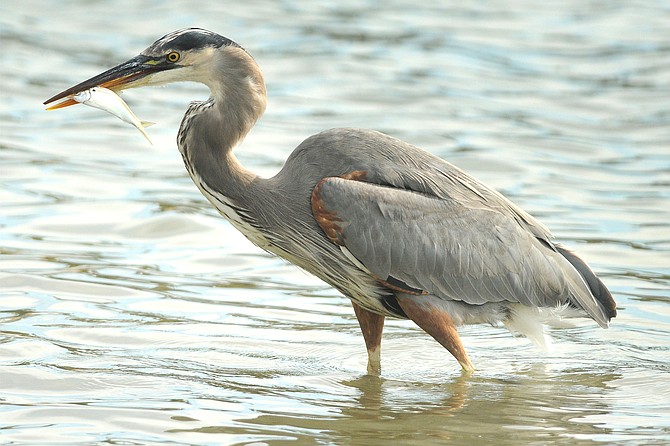 Facebook
Facebook
 X
X
 Instagram
Instagram
 TikTok
TikTok
 Youtube
Youtube

Shorebird-Watching enters its most agreeable season this month, with migrant and resident birds sharing common winter grounds. Egrets, herons, terns, and a variety of other species provide endless entertainment as they go about the business of fishing and feeding in San Diego County’s remaining coastal wetlands. Publicly accessible wetlands include the following (listed north to south): San Luis Rey River mouth, Buena Vista Lagoon, Agua Hedionda Lagoon, Batiquitos Lagoon, San Elijo Lagoon, San Dieguito Lagoon, Los Peñasquitos Lagoon, San Diego River flood channel (south of Sea World Drive), Sweetwater River marsh, southwest San Diego Bay, and Tijuana River Estuary. The same birds can also be seen on the shores of inland reservoirs such as Lake Murray and Lake Miramar.

Hike to San Diego County’s High Places to take advantage of the winter season’s characteristically clear air. From spots such as Cuyamaca Peak in Cuyamaca Rancho State Park, Wooded Hill in the Laguna Mountain Recreation Area, and Boucher Hill at Palomar Mountain State Park, vistas stretching a hundred miles across the Pacific Ocean are not uncommon at this time of year. Look for the dark profiles of Santa Catalina and San Clemente islands, lying northwest and west of San Diego respectively.

Toyon, or “Christmas-berry,” one of the more distinctive shrubs of Southern California’s native chaparral plant community, is now flaunting clusters of red berries. Here in coastal San Diego, toyon can be found wherever large patches of native vegetation survive, but especially in the thick chaparral covering some north-facing slopes. Toyon branches may look inviting to cut as a Christmas wreath — but they’re protected from picking by California state law.


Shorebird-Watching enters its most agreeable season this month, with migrant and resident birds sharing common winter grounds. Egrets, herons, terns, and a variety of other species provide endless entertainment as they go about the business of fishing and feeding in San Diego County’s remaining coastal wetlands. Publicly accessible wetlands include the following (listed north to south): San Luis Rey River mouth, Buena Vista Lagoon, Agua Hedionda Lagoon, Batiquitos Lagoon, San Elijo Lagoon, San Dieguito Lagoon, Los Peñasquitos Lagoon, San Diego River flood channel (south of Sea World Drive), Sweetwater River marsh, southwest San Diego Bay, and Tijuana River Estuary. The same birds can also be seen on the shores of inland reservoirs such as Lake Murray and Lake Miramar.

Hike to San Diego County’s High Places to take advantage of the winter season’s characteristically clear air. From spots such as Cuyamaca Peak in Cuyamaca Rancho State Park, Wooded Hill in the Laguna Mountain Recreation Area, and Boucher Hill at Palomar Mountain State Park, vistas stretching a hundred miles across the Pacific Ocean are not uncommon at this time of year. Look for the dark profiles of Santa Catalina and San Clemente islands, lying northwest and west of San Diego respectively.

Toyon, or “Christmas-berry,” one of the more distinctive shrubs of Southern California’s native chaparral plant community, is now flaunting clusters of red berries. Here in coastal San Diego, toyon can be found wherever large patches of native vegetation survive, but especially in the thick chaparral covering some north-facing slopes. Toyon branches may look inviting to cut as a Christmas wreath — but they’re protected from picking by California state law.
Comments